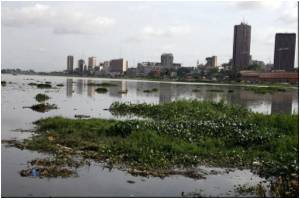Naturally occurring bacteria could be a formidable weapon against industrial toxins polluting groundwater, it has been shown.

The chlorinated solvents had leaked many years ago from a former ICI Australia chemical plant into the Botany Sands Aquifer, creating large plumes of contaminated groundwater.
ICI's successor, Orica Australia Pty Ltd, presently pumps out the contaminated water to prevent the plumes from spreading and entering Botany Bay. That water is then piped to a special treatment plant for decontamination. No other feasible option has been available.
"With present technology, it was expected that it might take decades or perhaps centuries before these toxic solvents are removed from the aquifer," says Associate Professor Mike Manefield, who led the research team.
"The energy demands and hence the financial burden of operating the contaminant containment system over this period of time is significant, but with our cultures in the ground we have the potential to greatly reduce the cleanup time and the cost and environmental footprint of containment.
"Our tests showed that these bacteria effectively breathe these pollutants the way we breathe oxygen. It's a big step forward. These cultures represent a greener and cheaper tool we can use to clean up some of our contaminated sites. They have not previously been available in Australia. The real appeal is that they’re Aussie bugs."
Advertisement
"We're now very hopeful that other contaminated industrial sites, such as at Altona, in Victoria, can be cleaned up relatively quickly in this way as well," he says.
Advertisement
It was found that bacteria had not degraded more of the pollutants on their own because they could not build up and sustain large populations in the aquifer due to a lack of food. Further studies in which large volumes of the bacteria were grown in beer kegs showed that they thrived on a variety of diets, including ethanol, glucose and emulsified vegetable oils.
Cost effective methods for distributing and sustaining the bacteria in contaminated soil and groundwater have been developed internationally and the Australian environmental consulting sector has the expertise and capacity to do the same on this continent.
The next step will be to inject large numbers of the home-grown bacteria and a suitable food supply into polluted groundwater. The team will soon publish technical details of the discovery of these cultures and has received $1.14 million in funding from industry and the Australian Research Council to carry out a large-scale biological remediation of groundwater at Botany and Altona.
"Cultures for chlorinated solvent degradation have not been available in Australia before owing to our strict quarantine laws, so this puts a new technology in the tool box of the remediation industry in Australia," says Associate Professor Manefield. "We've also devised new ways for the technology to have maximum impact when it is used.”
Source-Medindia









